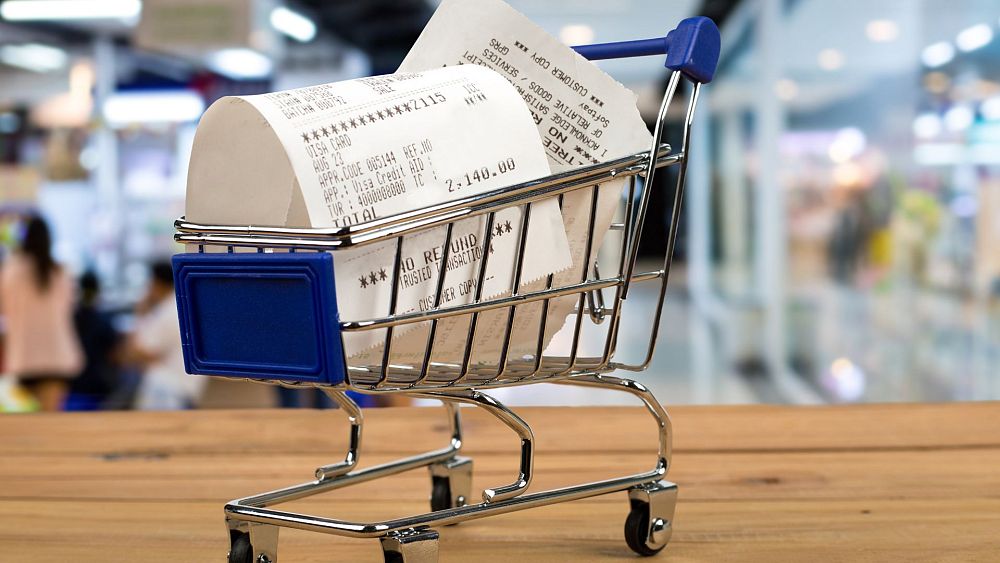
Inflation in the UK rose unexpectedly in February following a continuous increase in food and energy bills, adding more pressure on households.
Contrary to the 9.9 per cent drop economists had predicted, the consumer price index (CPI) increased by 10.4 per cent, up from January’s 10.1 per cent but still lower than October’s 41-year high of 11.1 per cent.
On a monthly basis, CPI inflation was of 1.1 per cent, close to one point above the predicted 0.6 per cent.
“The largest upward contributions to the monthly change in both the CPIH and CPI rates came from restaurants and cafes, food, and clothing, partially offset by downward contributions from recreational and cultural goods and services (particularly recording media), and motor fuels,” the UK Office for National Statistics (ONS) said.
In the UK, the unexpected increase in February broke the three consecutive months of slowing price increases since October last year.
How is the eurozone coping?
In the eurozone, inflation dropped to 8.5 per cent in February, bringing the total number of consecutive months of declines to five, despite increases in France, Germany and Spain, according to Eurostat.
Energy prices fell, but food and other products picked up the slack, according to the EU’s statistics office, Eurostat.
Food, alcoholic beverages and tobacco recorded an increase to 15 per cent in February, compared to 14.1 per cent the month before. Energy, on the other hand, registered 13.7 per cent, down from 18.9 per cent in January.
The decline in the general index occurred despite the fact that, in February, three of the major European economies recorded increases: in France, it rose to 7.2 per cent from 7.0, in Germany to 9.3 per cent from 9.2 and in Spain, it rose to 6.0 per cent from 5.9. The index went down in Italy, Belgium and Greece, and other countries.
Though the February data is undoubtedly positive, inflation in Europe remains much higher than the European Central Bank (ECB)’s target of keeping the eurozone area below 2 per cent.
Driven by energy and food, eurozone inflation set new records every month since November 2021. The situation had worsened since the spring with market disruptions related to the war in Ukraine.
Unusually warm temperatures earlier in autumn and winter meant energy prices largely returned to pre-war levels, but energy was determined the main driver of inflation in Europe. In January, increased energy prices contributed 17.2 per cent to the total rate of inflation, while food, alcohol, and tobacco equalled 14.1 per cent.
Hungary, in particular, experienced the highest levels of inflation in the eurozone at an estimated 25.8 per cent in February, up from 25.0 per cent in December, compared to 8.4 per cent a year ago.
The Baltic countries continue to be some of the hardest hit. In Latvia and Estonia, inflation remains high at 20.1 and 17.8 per cent respectively.
Czechia too continues to see high inflation at 18.4, one of the highest in the eurozone.
In ten countries — Germany, Ireland, Spain, France, Malta, Netherlands, Poland, Slovakia, Finland and Sweden — inflation increased in February.
Here is a look at the inflation rate in each country in Europe:
Following in the footsteps of its counterparts in other parts of the world, in July the European Central Bank (ECB) raised interest rates for the first time in 11 years by a larger-than-expected amount, as it targets stubbornly high inflation.
This was followed by another record rate hike in September, raising new questions about whether the rush to make credit more expensive and keep inflation in check will plunge major economies into recession.
On October 27, the ECB raised interest rates again, hiking its deposit rate by a further 75 basis points to 1.5 per cent — the highest rate in more than a decade.
On November 29, the president of the ECB, Christine Lagarde, warned that inflation in the eurozone had not peaked and risked rising even higher than predicted — fuelling expectations of further rate hikes.
«We stand ready to adjust all of our instruments within our mandate to ensure that inflation returns to our medium-term inflation target,» she said last month.
What’s causing these inflation rates?
Europe and much of the wider world were already being hit with soaring energy prices — which contribute to inflation — before Russia’s invasion of Ukraine in late February.
The conflict has exacerbated the energy crisis by fuelling global worries it may lead to an interruption of oil or natural gas supplies from Russia. Moscow said in September it would not fully resume its gas supplies to Europe until the West lifts its sanctions.
Russia typically supplies about 40 per cent of Europe’s natural gas.
The prices of many commodities — crucially including food — have also been rising ever since COVID-19 pandemic lockdowns were first introduced two years ago, straining global supply chains, leaving crops to rot, and causing panic-buying in supermarkets.
The war in Ukraine again dramatically worsened the outlook, as Russia and Ukraine account for nearly a third of global wheat and barley, and two-thirds of the world’s exports of sunflower oil used for cooking. Ukraine is also the world’s fourth-biggest exporter of corn.
